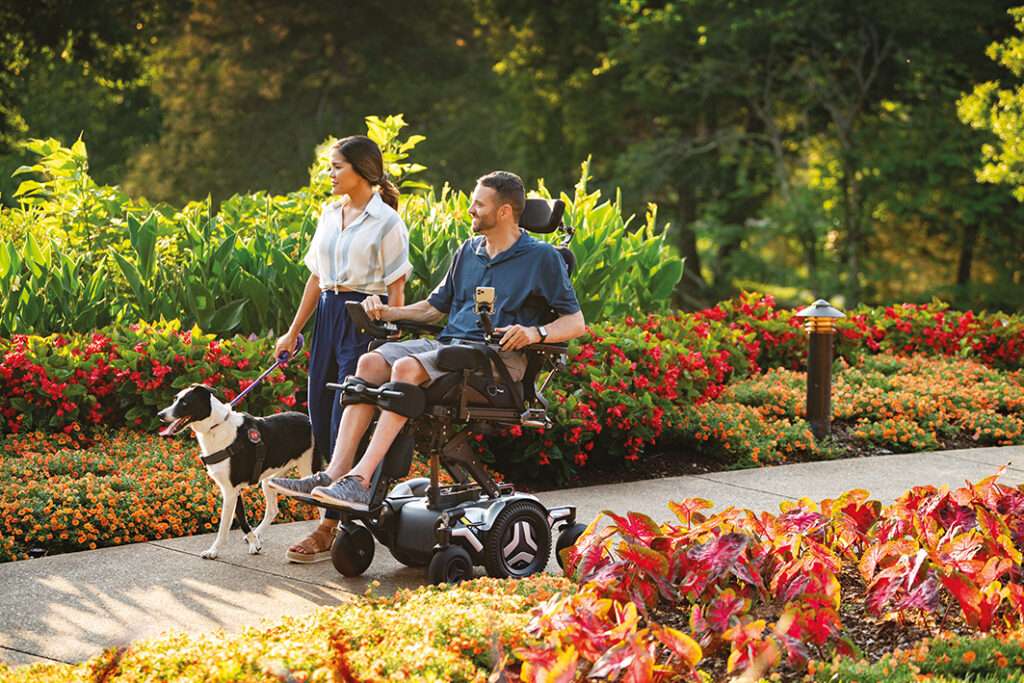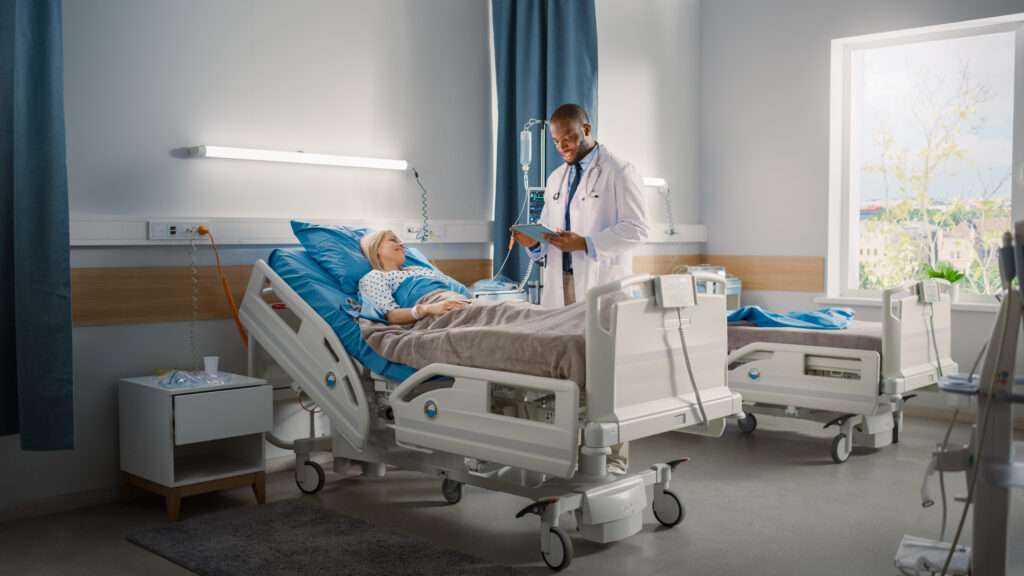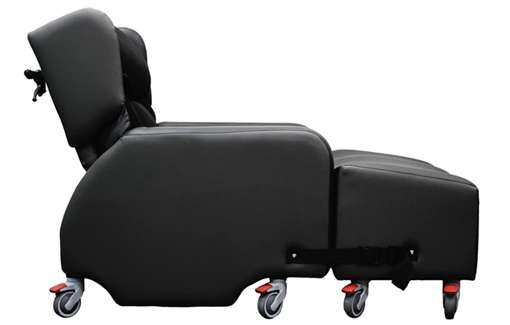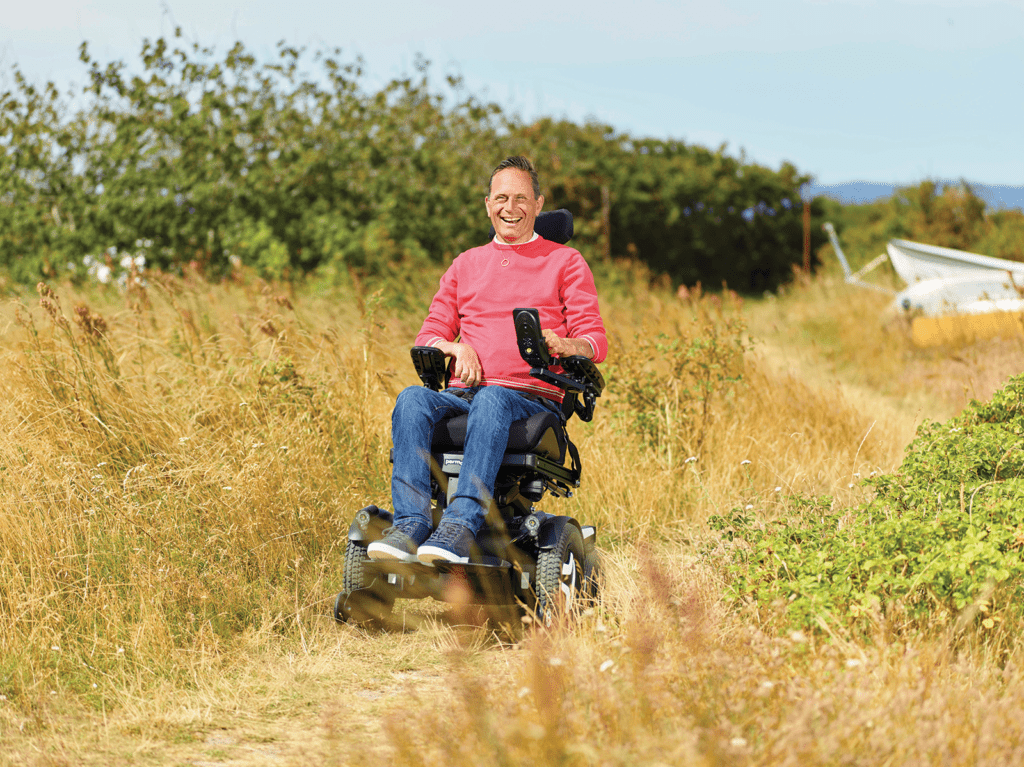Finding a specialist care chair for someone with Huntington’s Disease involves finding a seating solution that will keep the individual safe and stable (often in a calming cocoon seat, giving a hugging sensation), whilst also having their pressure care and postural needs considered. HD is a progressive neurological condition, and so changing care requirements over time also need to be taken into account. With a conventional chair, people with Huntington’s Disease tend to slide out due to the twisting and involuntary movements that characterise the disease.
On this page, we’ll explore the importance and key considerations around specialist seating for people with Huntington’s Disease, as well as looking at types of seating options available, and the collaborative approach needed to ensure optimum health outcomes.
Jump straight to...
Understanding Huntington’s Disease

Huntington’s Disease is a hereditary and progressive neuro-degenerative disorder, which can be characterised by motor, cognitive, and psychiatric symptoms. Some of the most recognised symptoms of the condition include involuntary or ataxic movements, impaired coordination, and postural instability, all of which has a big impact on an individual’s ability to sit comfortably and safely. As the condition progresses over time, symptoms become significantly worse – mobility, and carrying out of daily tasks such as eating or swallowing, become incredibly difficult to do without help. Full time care is usually required in the later stages of the disease.
That’s why specialist seating plays such a vital role in addressing the specific challenges faced by those with the Disease. By working with Occupational Therapists and experienced seating assessors though, it’s possible to find seating solutions to enhance comfort, promote 24-hour postural support, and reduce the risk of secondary complications (often including the development of pressure ulcers and musculoskeletal issues).
You can find out more about the condition on the NHS website, including helpful details about the symptoms to look out for. The OT Practice website also offers information regarding Occupational Therapy for people with Huntington’s Disease.
Specialist Chairs for People with Huntington’s | What to Look For
When choosing a specialist seating solution for someone with Huntington’s disease, there are many key features and functionalities to be aware of, that will ensure the chair provides maximum comfort and support to its user. Factors such as the person’s height, weight, and body shape, as well as any specific and complex care requirements they may have due to their condition, should also be taken into account. Look for chairs with strong and stable frames, comfortable padding and materials, and easy-to-use adjustment features.
Protection Against Involuntary (Chorea) Movement
Chorea movements are a common symptom in people with Huntington’s disease and can lead to difficulties with posture and balance. These involuntary movements can cause the body to move in unpredictable ways, making it difficult to maintain a stable seated position.
Involuntary movements associated with Huntington’s can cause friction and shear on the skin, which can increase the risk of skin breakdown and pressure injuries. For example, individuals with the condition may rub their skin against clothing or surfaces, leading to skin tears and abrasions.
Specialist seating can be used to support individuals with chorea movements by providing postural support and stability. Lateral support cushions can help to prevent the individual from sliding out of the chair, while seat depth and backrest height can be adjusted to ensure that the individual is properly supported.
Tilt-in-space chairs can be beneficial for individuals with chorea movements. These chairs allow for changes in position without compromising stability, and can provide pressure relief for individuals who are at risk for pressure injuries.
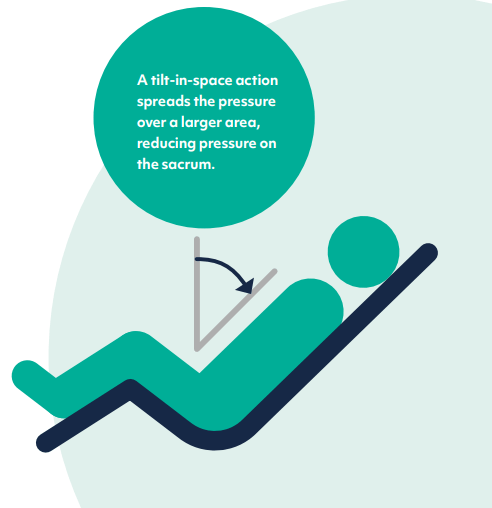
The padding and positioning of the seat and backrest can also help to reduce the risk of injury from involuntary movements. Padded surfaces can protect against impact, and a deep and safe seating position can prevent falls or other injuries.
Stability & Safety from Entrapment
Having a stable chair with a very strong frame is essential to keep a person with Huntington’s Disease still and grounded, especially when they are presenting ataxic movements that could potentially destabilise them. Chairs such as the Lento Neuro have a total of eight strong braked castors too, on top of the steel frame, to offer a truly stable and supportive sitting experience.
The chair user needs to be kept safe from falling out of the chair, and free from any risk of entrapment or abrasion caused by the ataxic movements. Extra padding, and removing seams and recesses can all help to achieve this.
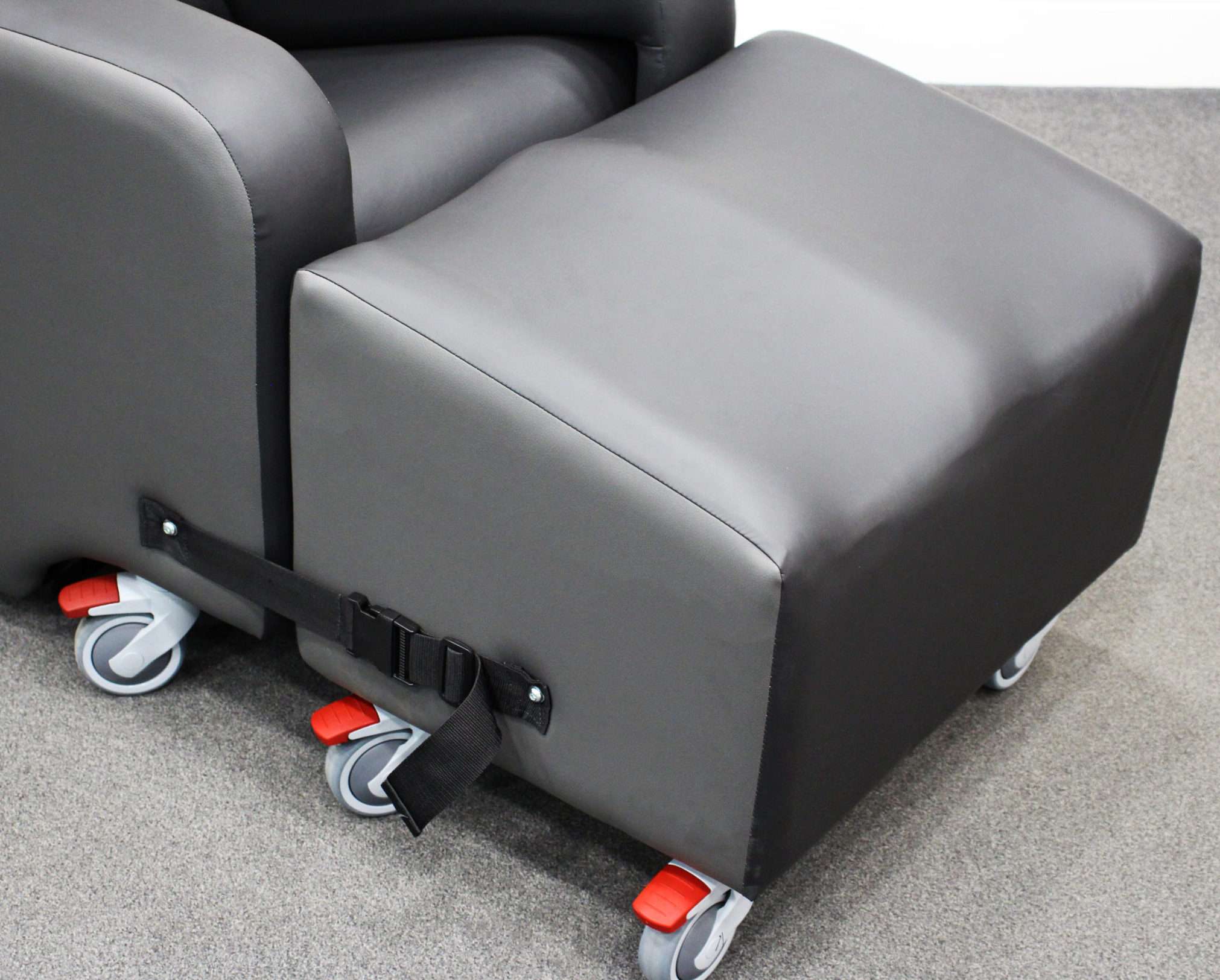
Postural Support
Having the right postural support built into the chair prevents the patient adopting uncomfortable positions that may lead to postural problems. A raked seat, sloping back from the front of the seat keeps the patient secure in the chair, as well as spreading their weight and relieving pressure on their thighs. Different accessories such as lateral supports and head supports can all help them keep a good midline position in the chair and stop them leaning to one side.
Pressure Care & Materials
Muscle degeneration, involuntary movements, and loss of mobility associated with Huntington’s Disease can increase the risk of pressure injuries in several ways. Muscle degeneration can cause the muscles that support the body to weaken, this can mean that a person with Huntington’s may “sink into” their chair leading to increased pressure on bony areas of the body.
This pressure can cause skin and tissue damage and eventually lead to the development of pressure injuries.
As you can imagine, that makes it more uncomfortable for people when they have bony limbs (like their elbows, posteriors, pelvis, etc) that are constantly moving and knocking against the chair repeatedly. This can affect the person’s skin integrity and it can also lead to pressure injuries if nothing is done about it.
Finding a chair that can has soft and supple materials (such as Dartex), and one that can accommodate pressure relief cushions being used on it (such as with in-built cool-gel or an alternating air system) is highly advised.
Find out more about pressure relief and care here: Preventing & Treating Pressure Wounds in a Chair – Vivid Care
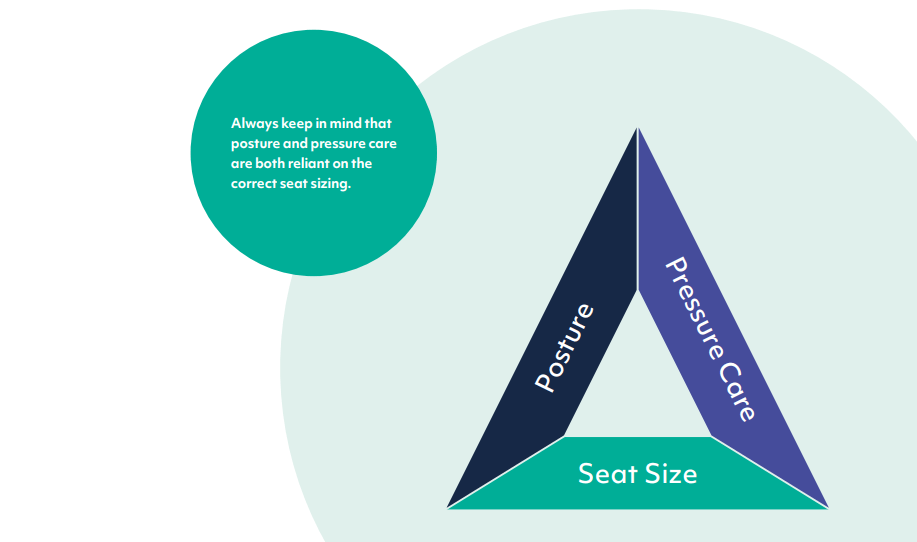
Adjustability
Another key feature to consider when selecting adaptive seating for people with Huntington’s Disease is adjustability. Individuals with the condition experience progressive changes in their physical abilities and symptoms, and therefore require seating solutions that can adapt to their changing needs.
Calming Comfort
It is essential to make the patient feel as comfortable as possible, as it enhances their feeling of security and wellbeing. Not only this, but reduced levels of stress and discomfort can actually reduce chorea in people with Huntington’s Disease! Using soft fabrics and having the patient reclined at the right angle helps to relax the user.
You can also offer a sense of individuality by giving the user of the chair a range of fabric colour options. As a long-term condition, a care chair is often a companion that stays with the patient for many years, making it important that they feel like it is their own.
Introducing the Lento Neuro
The Lento Neuro chair for people with Huntington’s Disease and other neurological conditions, was a culmination of 18 months of research and development, working in tandem with HD experts and therapists.
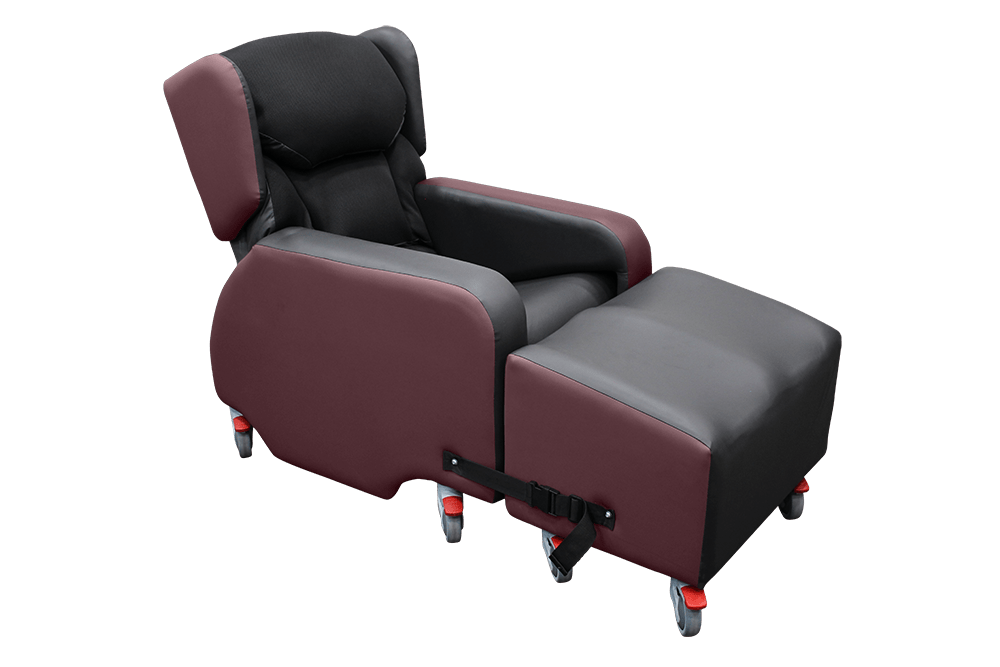
The Lento Neuro chair
We achieved our vision of a chair for HD patients that could:
- Be adjusted without tools to suit the vast majority of adult patients
- Be available in stock for quick delivery
- Exceed current clinical expectations for postural management and chair strength, over and above the current range of chairs
A key feature of our design was the cocooned-shaped seat, making the patient feel safe and secure and reducing the frequency of ataxic movements.
We have consulted with the market at every stage of development to ensure this is a chair for any patient that needs supportive seating but is at risk of falling out of the chair due to impaired neurological function.
Taking the five main features necessary for HD seating, we compare these criteria across a range of chairs so you can see the different options available.
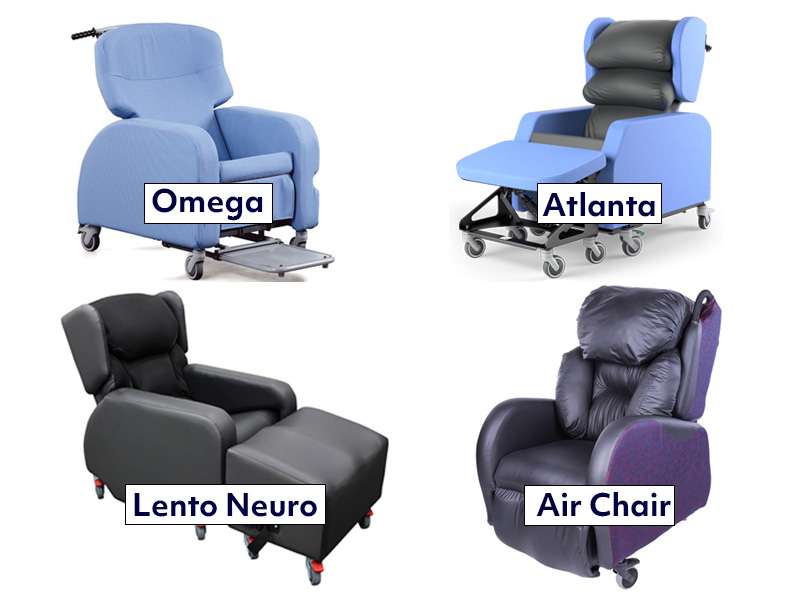
Standout Features of the Lento Neuro
In our quest to build a standout chair, we had to develop certain features that would go beyond the current range available. These three main features are:
Stronger for Longer
With its strong steel frame and low centre of gravity, the Lento Neuro is able to withstand the most vigorous ataxic movements, cushioning the impact and protecting the patient in the process. When all braked castors are in use, the chair is practically immovable. Built to last, the integrity of the fabric and strength of the frame is maintained over a long period of time, reducing maintenance costs over the long term.
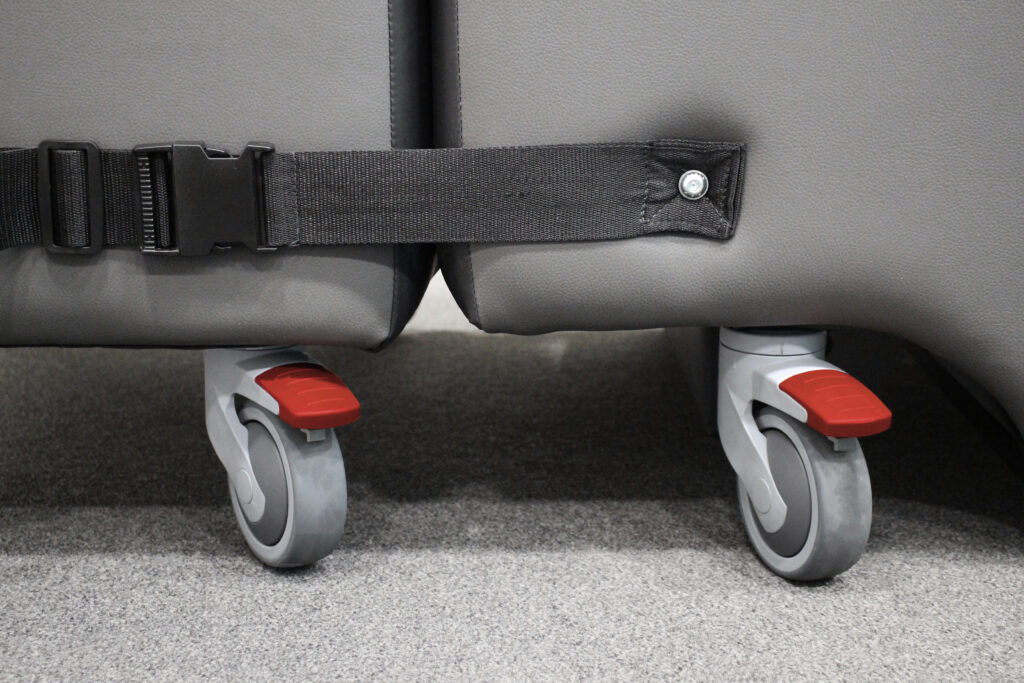
Patient Safety
The seamless fabric on the contact areas of the chair prevents fabric damage and entrapment caused by involuntary movements. With no possible areas of the entrapment, the patient can feel safe and reassured.
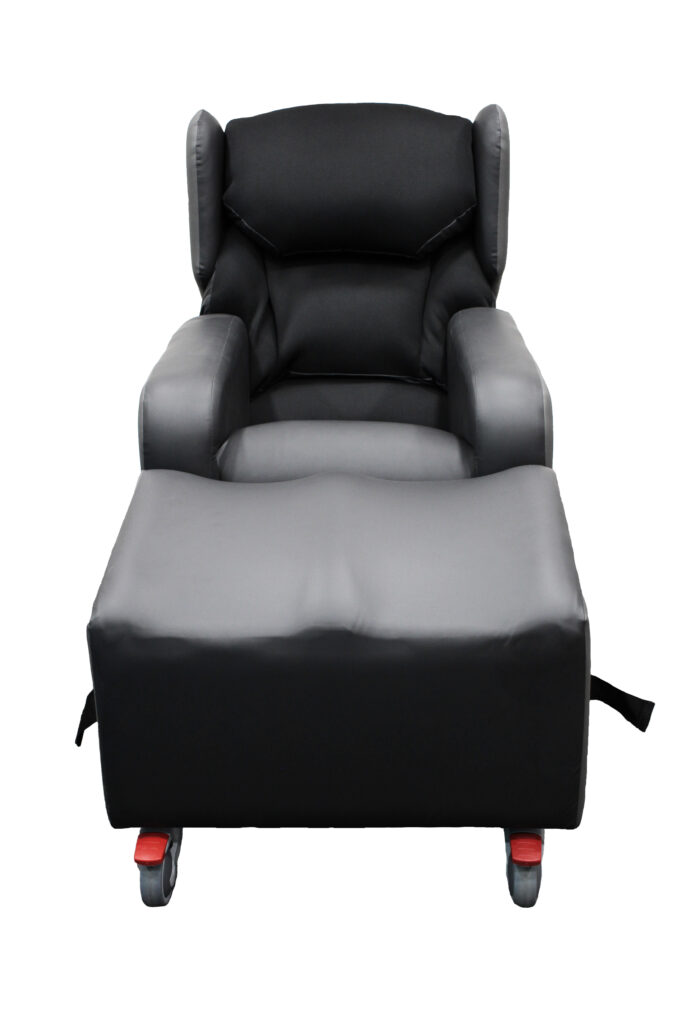
Fully Adjustable
The seat is width and depth adjustable, so can be resized to suit each stage of the patient’s condition as it changes over time. This can be done easily without tools, saving the costs of reassessment and adaptations to the chair further down the line. There are a range of different backrest options, from lateral support to waterfall options, to align to the patient’s postural needs.
Other Features
- The homely look of the Lento Neuro makes it blend in well in a domestic or residential care environment. The materials used for the upholstery emulate a leather effect, giving it a quality look and feel.
- Higher specifications are available for acute care environments. The infection control spec uses magnetised cushions instead of Velcro, and pressure relief can be increased for higher risk patients with gel cushions.
- Finally, the Lento Neuro is transfer-friendly. The sides can be removed to facilitate side transfers, and the chair is stand-aid and hoist compatible to allow patients in the later stages of a condition with limited mobility to be transferred in and out of the chair.
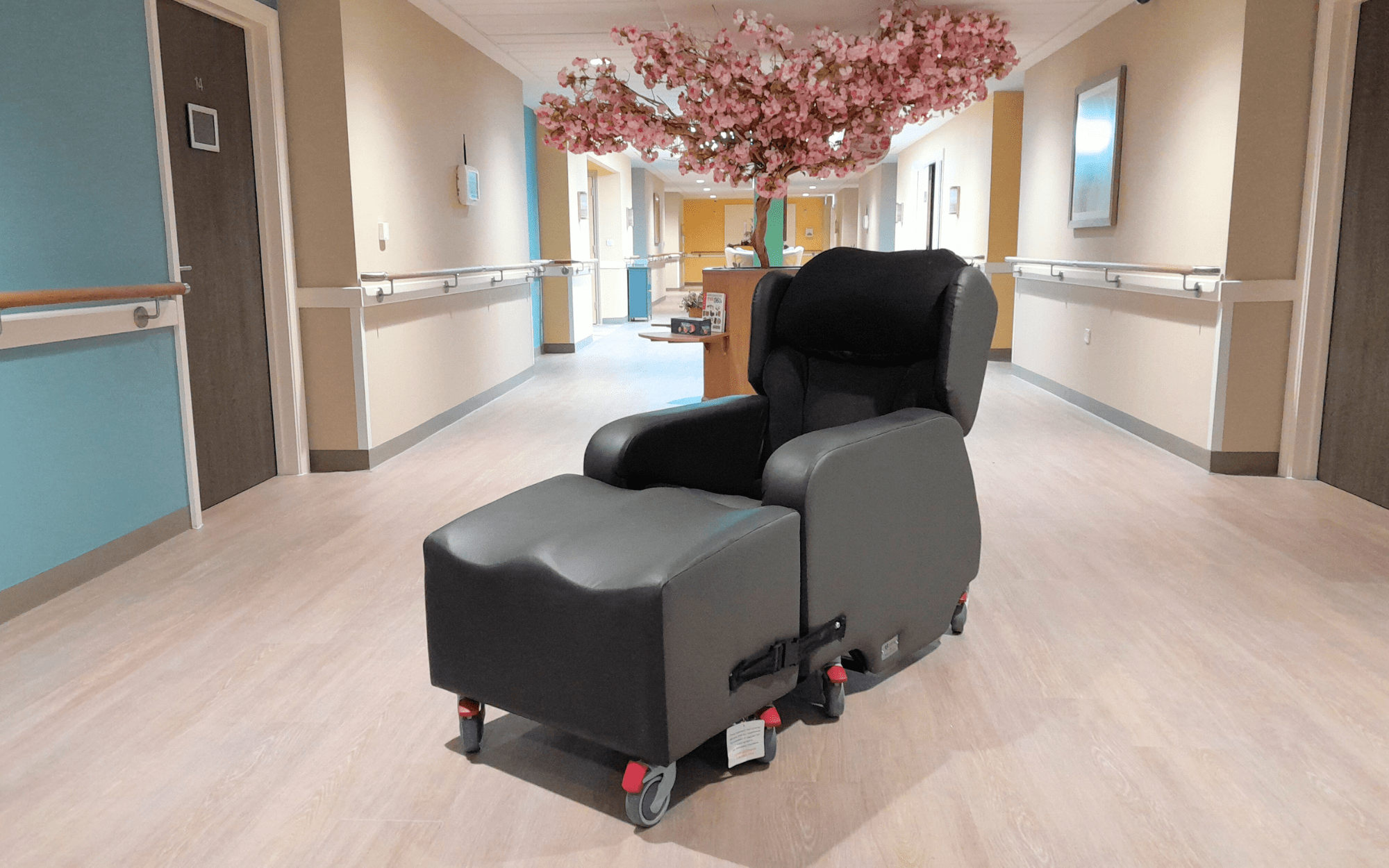
FAQs
Is postural support for someone with Huntington’s Disease really so important?
Considered postural support is crucial for those living with Huntington’s Disease: one of the most significant challenges people with the condition face is postural instability, which can develop into more serious complications if left unattended. Pelvic positioning is crucial in achieving proper alignment and postural support. If you work with a healthcare professional or experienced seating assessor who understands the postural needs of the individual, you will greatly enhance their comfort and reduce pain.
Which materials would you recommended for people with Huntington’s disease?
Cushion materials such as the well known and trusted Dartex fabric, are soft, supple, and durable too – Dartex was designed specifically for the NHS! It is also helpful to make sure that the materials on your chosen chair are easy to clean, and waterproof. Finally, offering colour options can bring that sense of individuality which is so vital for such a long-term condition. You can read more about our material and colour options here: Materials & Colours – Vivid Care
Can a care chair help with mobility issues associated with Huntington’s?
Variable angle lift (VAL), tilt-in-space, and recline are all features that can significantly improve mobility and independence for someone with Huntington’s Disease. They will make getting in and out of the chair much easier. However, make sure your chosen chair is also hoist compatible, for the later stages of the condition.
How often should a chair be adjusted for someone with Huntington’s?
Huntington’s Disease is a progressive neurological disorder, so we recommend that you stay in touch with your OT and make regular changes to the settings of your chair based on their suggestions and the users changing needs. Every individual is different, each with their own symptoms and levels of mobility, chorea, and ability, so it’s important that the chair you buy is one that can be easily adjusted to suit this.
Can a care chair accommodate chorea or movement associated with Huntington’s disease?
Yes it can, you will just need to find a chair that has a strong metal frame, braked castors, and durable fabrics – this will ensure longevity, and actually improved comfort for the user as well due to the feeling of being more stable and secure. Our Lento Neuro is a perfect example of a care chair that has been over-engineered for maximum strength and stability.
What funding options are available for purchasing specialist seating for people with Huntington’s?
There are many funding options available people with Huntington’s Disease, including insurance coverage, government assistance programs, and grants from charitable organisations. Occupational therapists and healthcare providers can assist you in finding the best funding stream for you.
We have got a charities list you can also explore: Vivid.Care Charities Database – Vivid Care
Conclusion
The Lento Neuro is a revolutionary chair, taking care of people with Huntington’s Disease and neurological conditions to a whole new level.
Safety, security and comfort are critical factors for patients experiencing ataxic movements, which the Lento Neuro performs exceptionally well.
We understand that getting the right type of chair is crucial for your comfort, mobility, and quality of life. That’s why we offer professional assessments at your home or location of choice, to help you find the perfect chair to meet your specific needs.
Enquire About the Lento Neuro
Arrange an assessment






